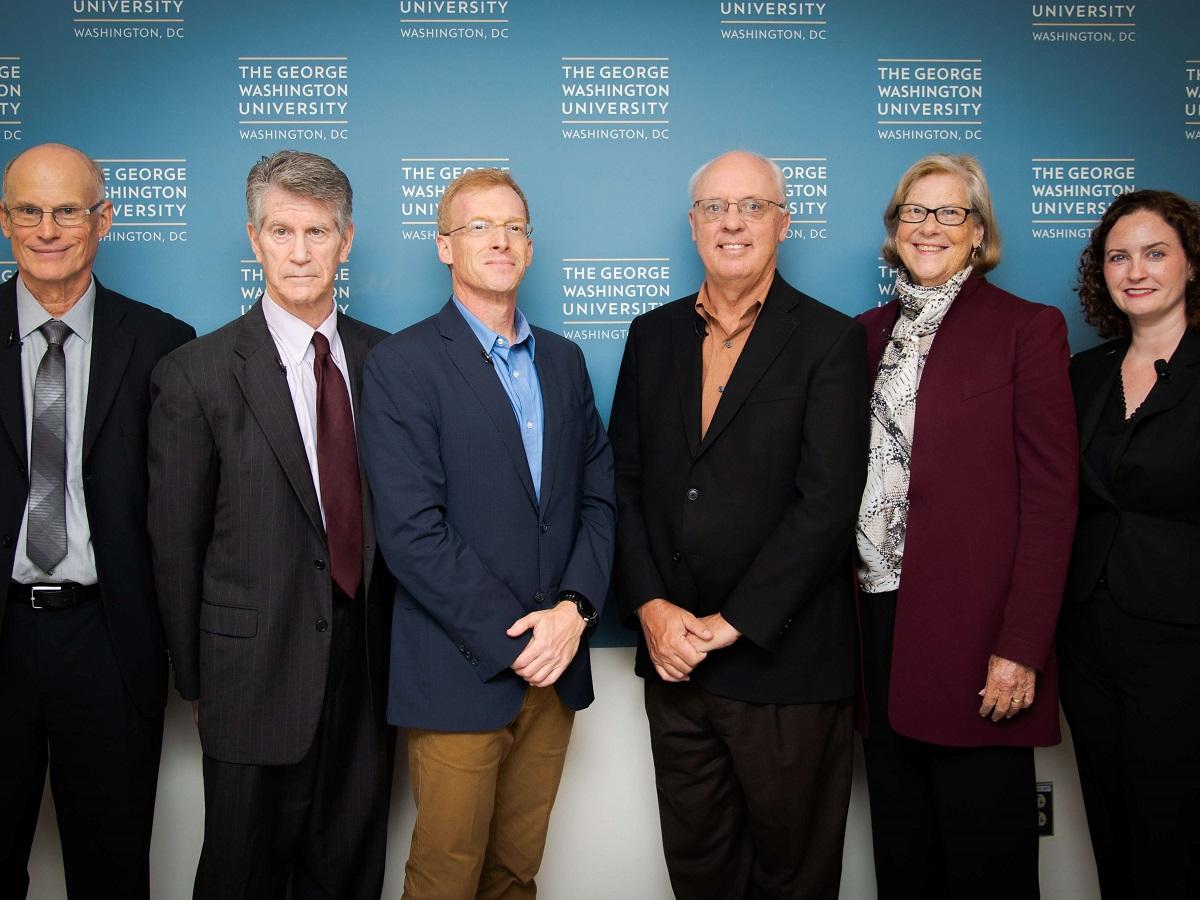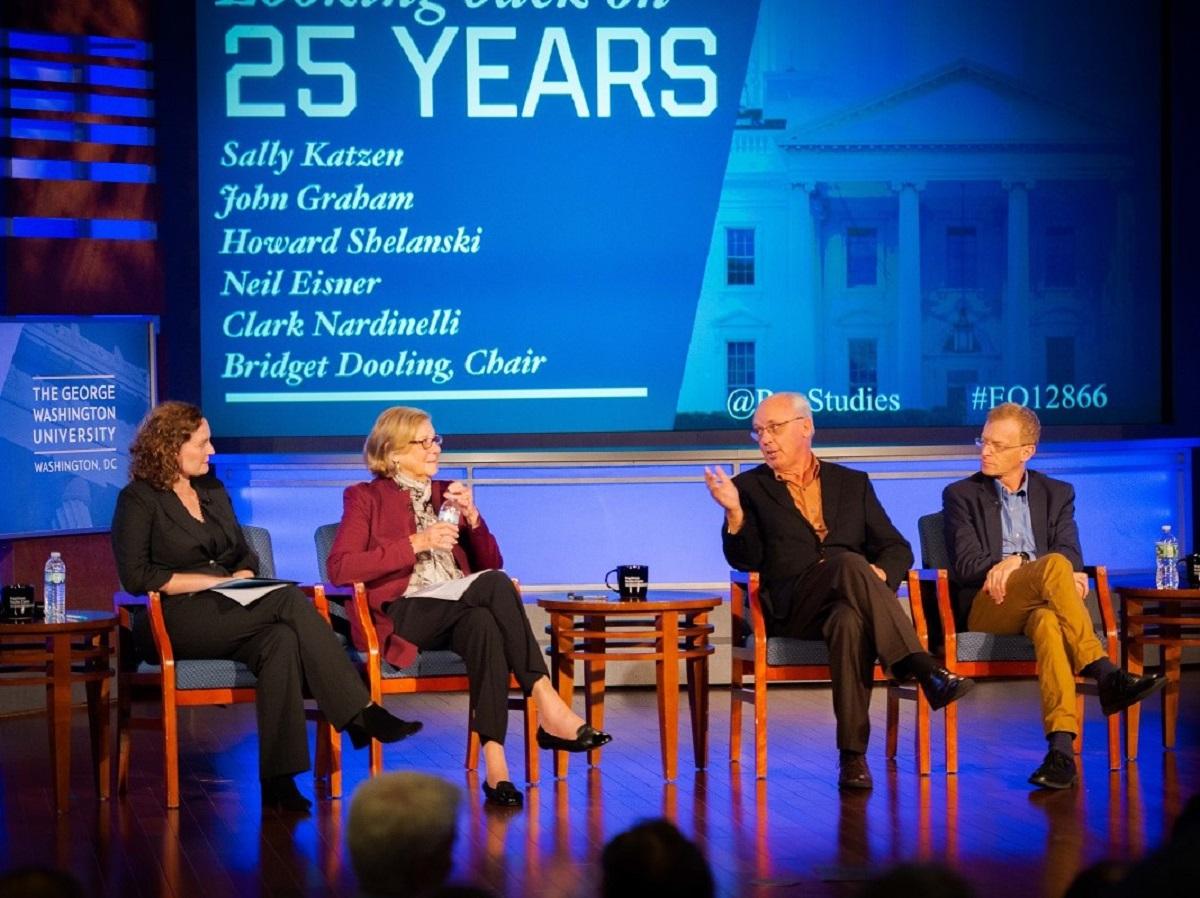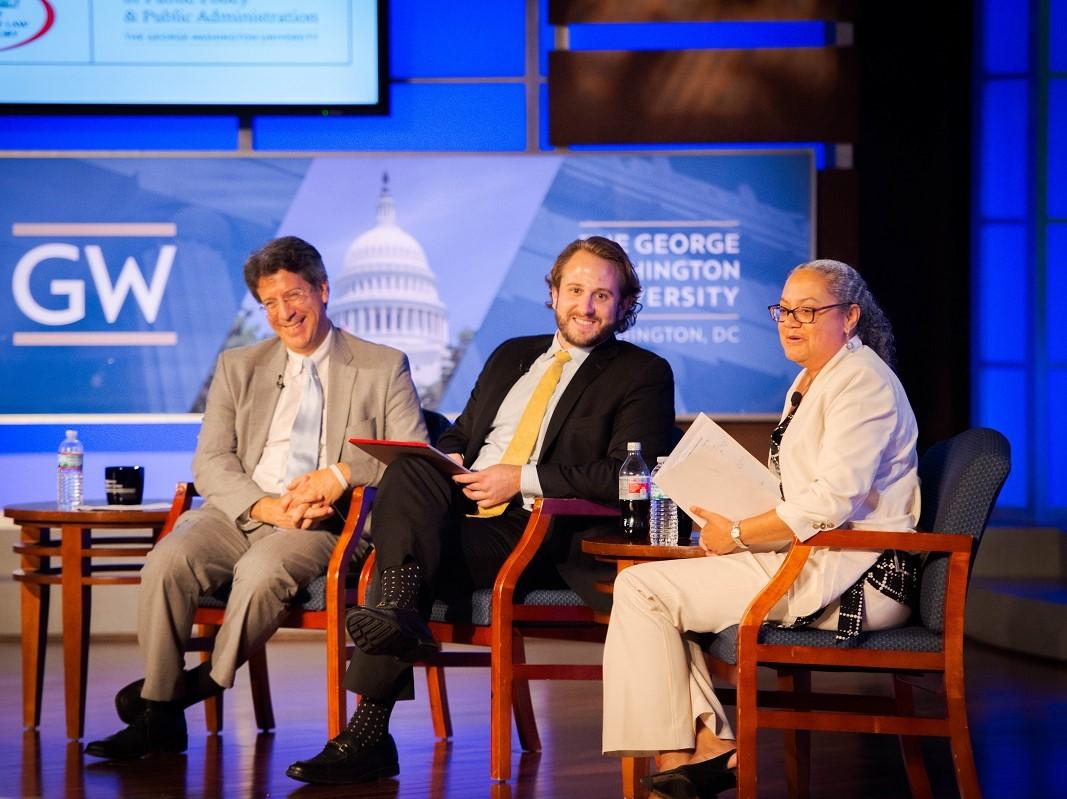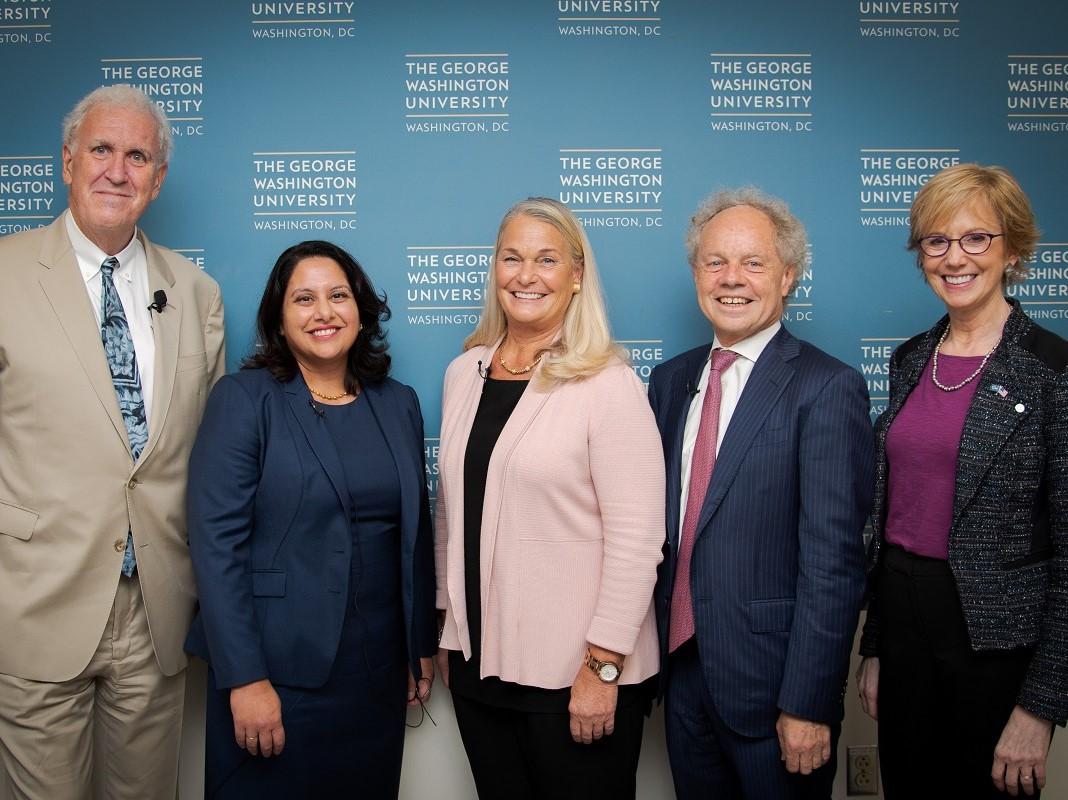25 Years of EO 12866
The GW Regulatory Studies Center hosted this event in the Jack Morton Auditorium in the MPA building on GW's campus. The September 2018 event brought together OIRA administrators from the Clinton, Bush, Obama, and Trump administrations, along with thought leaders from the academy, executive agencies, and Congress.
Co-sponored by the Trachtenberg School of Public Policy and Public Administration, the Society for Benefit-Cost Analysis, and the American Bar Association's Section of Administrative Law and Regulatory Practice.
Videos
Panel One: Reflecting on EO 12866's Origins
OIRA Administrators from the Clinton, Bush, and Obama presidencies, along with other former and current senior agency staff discuss the history of Executive Order 12866 - how it came to be and the impact it has had over the past 25 years.
Sally Katzen's Opening Remarks
Sally Katzen was OIRA Administrator and in the room when President Clinton signed EO 12866 - she shares her story as to how that moment came to be.
Panel Two: Q&A with Bipartisan Congressional Staff
Shawne McGibbon (General Counsel, ACUS) moderates a bipartisan & bicameral panel between two senior congressional regulatory policy staff members; Anthony Papian (Senate HSGAC) & Daniel Flores (House Judiciary).
Codifying EO 12866
Bipartisan and bicameral congressional staff discuss the ongoing prospects of codifying the principles of EO 12866.
Panel Three: Looking to the Future
Neomi Rao (OIRA Administrator), Ann Marie Buerkle (CPSC Acting Chair & Commissioner), Richard Revesz (NYU Law School Professor), and Susan Dudley (GW Regulatory Studies Center Director) join former OMB Deputy General Counsel John Cooney to discuss the future of EO 12866 and its principles in the rulemaking process.
Neomi Rao's Opening Remarks
Then OIRA Administrator Neomi Rao reflects on the initial views of Executive Order 12866 within the Trump administration, and the reasons why she thinks the principles of the EO are likely to continue far into the future.
Related Commentaries from the Event:
GW Regulatory Studies Center policy analysts summarize our recent event co-sponsored by the American Bar Association, Society for Benefit-Cost Analysis, and Trachtenberg School of Public Policy & Public Administration.
Bridget Dooling is a research professor at the GW Regulatory Studies Center. She moderated the "Looking Back on 25 Years" panel, and in this commentary she shares her key take-aways as well as her overall impressions of the event, informed by her tenure in OIRA.
Sally Katzen was the OIRA Administrator when E.O. 12866 was signed by President Clinton, and in this commentary she reflects on how it came into existence and lays down the foundation for why it has thrived over the past 25 years of bipartisan administrations.
Neil Eisner, former Assistant General Counsel for Regulation and Enforcement, Dept. of Transportation, comments on the initial implementation and adoption of E.O. 12866, highlights four significant accomplishments it has had within the rulemaking process, and offers a few lessons learned.
Clark Nardinelli, Chief Economist at FDA and Vice President of the Society for Benefit Cost Analysis, comments on the philosophy underlying E.O. 12866 and the 12 principles of good regulation.
ACUS General Counsel Shawne McGibbon moderated the "Q&A with Congressional Staff" panel, and in this commentary she provides an overview of the bipartisan & bicameral support for E.O. 12866 and the ongoing efforts to codify its effects.
Daniel Flores - Majority Staff member of the House Judiciary's Subcommittee on Regulatory Reform, Commercial and Antitrust Law - lays out how Congress has been highlighting the need to codify the principles of Executive Order 12866.
Susan Dudley, former OIRA Administrator for President Bush, discusses how E.O. 12866 has lead to bipartisan consensus of regulatory principles, reviews the ongoing effects of this 25-year-old rulemaking process, and why it is likely to continue to make a significant difference well into the future.
NYU Law Professor Richard Revesz, although supportive of the bipartisan consensus of benefit-cost analysis, is concerned for the future of the principles behind E.O. 12866. This commentary provides his opening remarks and ten examples of what he sees as concerning actions from the current administration.
Former OMB Deputy General Counsel John Cooney moderated the, 'Looking to the Future' panel, and in this commentary he explains how this executive order struck a balance among competing ideas at the time and argues that its core principles will continue to govern the regulatory review process.













